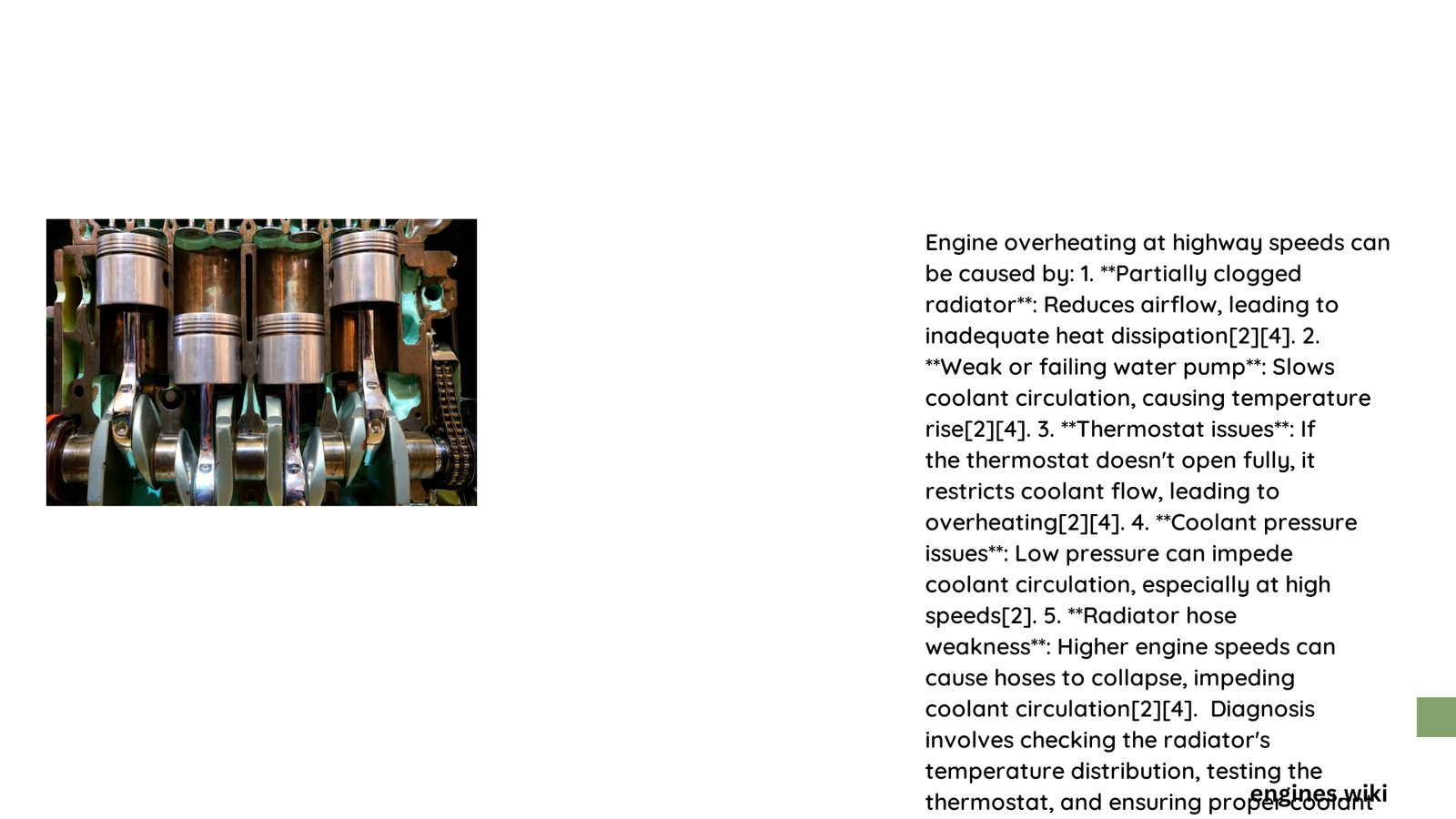Driving on highways can unexpectedly transform a smooth journey into a stressful mechanical challenge when engine temperatures spike beyond safe limits. Engine overheating at highway speeds represents a complex interplay of mechanical factors, where increased vehicle velocity, cooling system efficiency, and potential component failures converge to create a potentially dangerous situation for drivers and their vehicles.
What Triggers Engine Overheating During Highway Travel?
Highway driving demands peak performance from your vehicle’s cooling system. Unlike city driving, sustained high speeds generate substantial heat, exposing any underlying mechanical weaknesses in the cooling infrastructure.
Why Does Temperature Rise Rapidly at High Speeds?
Several critical factors contribute to engine overheating during highway travel:
- Cooling System Restrictions
- Blocked radiator passages
- Sediment accumulation
- Restricted coolant flow
-
Compromised heat exchange efficiency
-
Mechanical Component Failures
- Malfunctioning water pump
- Defective thermostat
- Damaged radiator
- Compromised fan operation
How Serious Are Highway Overheating Symptoms?
| Symptom | Severity | Potential Damage |
|---|---|---|
| Rising Temperature Gauge | Moderate | Engine Component Stress |
| Steam from Hood | High | Immediate Risk |
| Coolant Leakage | Critical | Potential Engine Failure |
| Warning Lights | Urgent | Requires Immediate Action |
What Diagnostic Steps Should You Take?
When experiencing highway overheating, immediate and systematic investigation becomes crucial:
- Immediate Actions
- Reduce vehicle speed
- Turn off air conditioning
- Open vehicle heater to maximum
-
Safely pull over and stop
-
Professional Inspection Checklist
- Comprehensive cooling system pressure test
- Radiator and hose condition assessment
- Thermostat functionality verification
- Coolant quality and concentration evaluation
Can Preventative Maintenance Mitigate Overheating Risks?
Proactive maintenance significantly reduces highway overheating probability:
- Regular coolant system flush
- Annual radiator inspection
- Timely replacement of wear-prone components
- Use of manufacturer-recommended coolant
- Monitoring coolant levels and quality
Technical Insights into Cooling System Dynamics
Highway speeds create unique thermal challenges. As vehicle velocity increases, cooling system efficiency becomes paramount. The radiator must dissipate exponentially increasing heat generated by engine components.
Key performance metrics include:
– Coolant flow rate
– Heat transfer coefficient
– Airflow volume
– Thermal resistance of cooling components
Expert Recommendations for Long-Term Prevention
- Install high-performance cooling components
- Use advanced synthetic coolants
- Consider aftermarket cooling system upgrades
- Implement regular diagnostic scanning
When to Seek Professional Help?
Persistent overheating despite basic interventions indicates potential complex mechanical issues requiring specialized diagnostic equipment and expertise.
Conclusion

Understanding engine overheating at highway speeds demands a holistic approach combining technical knowledge, preventative maintenance, and timely intervention.
